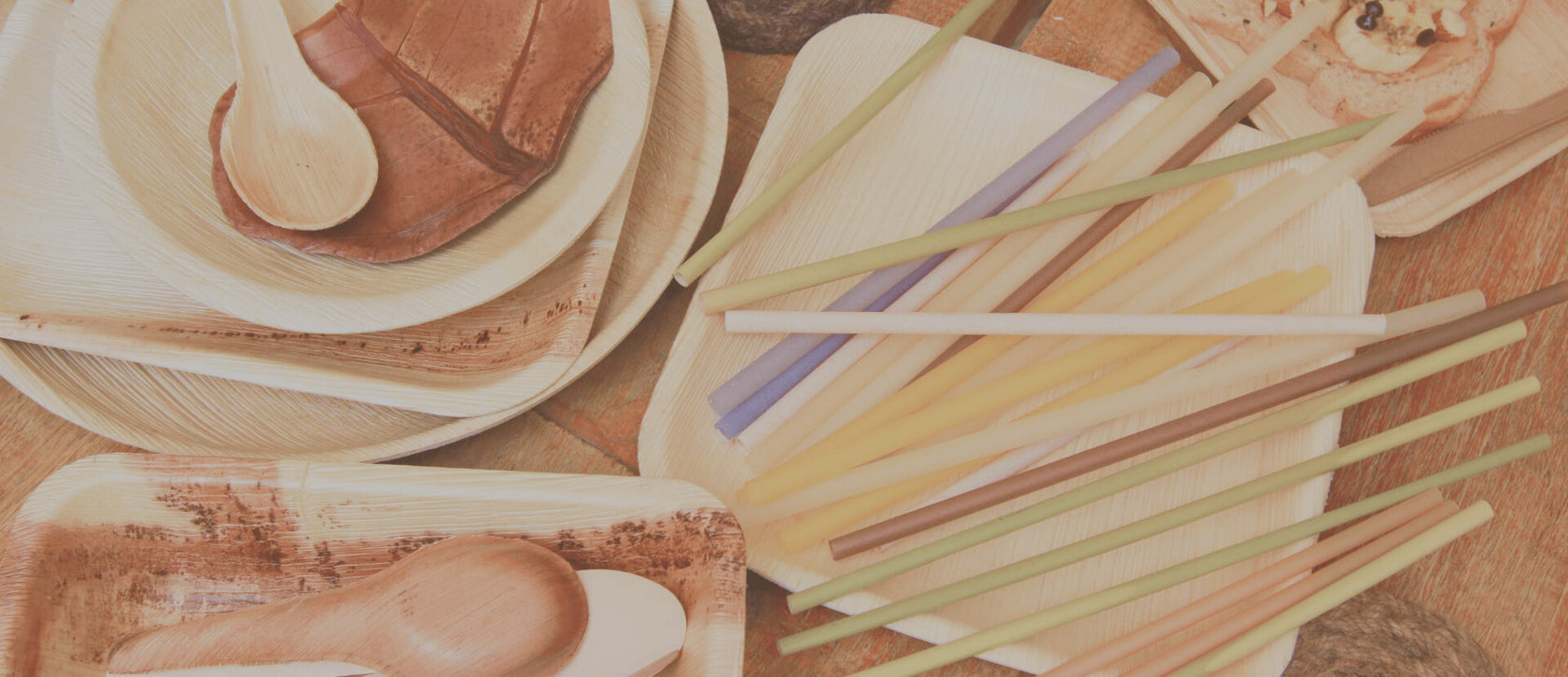Rác thải nhựa là một trong những vấn đề môi trường nghiêm trọng nhất hiện nay. Theo thống kê của Hiệp hội Nhựa Thế giới, mỗi năm có khoảng 8 triệu tấn rác thải nhựa đổ ra biển. Lượng rác thải này có thể tồn tại trong môi trường hàng trăm năm, gây ra nhiều tác động tiêu cực đến môi trường và sức khỏe con người. Trong bài viết này, bạn hãy cùng EQUO tìm hiểu ý nghĩa và quá trình tái chế rác thải nhựa, cũng như cách nó góp phần bảo vệ môi trường cũng như tiết kiệm tài nguyên quý giá nhé!
1. Ý nghĩa của việc tái chế rác thải nhựa
Rác thải nhựa khi thải ra môi trường sẽ gây ô nhiễm đất, nước, không khí, ảnh hưởng đến sức khỏe con người và động vật. Tái chế rác thải nhựa là quá trình chuyển đổi rác thải nhựa thành các vật liệu mới, có thể tái sử dụng. Tái chế rác thải nhựa mang lại nhiều ý nghĩa quan trọng, bao gồm:
1.1. Bảo vệ môi trường và giảm ô nhiễm
Tái chế giúp giảm lượng rác thải nhựa thải ra môi trường, từ đó giảm thiểu ô nhiễm đất, nước, không khí. Rác thải nhựa khi không được xử lý đúng cách sẽ mất hàng trăm năm để phân hủy, trong quá trình phân hủy sẽ giải phóng các chất độc hại, gây ô nhiễm môi trường.

Nguồn: Internet
Rác thải nhựa có thể gây ô nhiễm đất khi chôn lấp, làm giảm khả năng thấm nước của đất, dẫn đến ngập úng, ô nhiễm nguồn nước ngầm. Rác thải nhựa cũng có thể gây ô nhiễm nước khi trôi dạt xuống biển, sông, hồ và có thể làm tắc nghẽn hệ thống thoát nước, gây ngập úng, ô nhiễm nguồn nước. Rác thải nhựa cũng có thể gây ô nhiễm không khí khi đốt bởi vì sẽ tạo ra các khí độc hại như dioxin, furan, gây ô nhiễm không khí, ảnh hưởng đến sức khỏe con người.
1.2. Tiết kiệm tài nguyên và năng lượng
Tái chế rác thải nhựa giúp tiết kiệm tài nguyên và năng lượng. Để sản xuất nhựa nguyên sinh, cần sử dụng nhiều tài nguyên thiên nhiên như dầu mỏ, khí đốt, than đá, đồng thời tiêu tốn một lượng lớn năng lượng. Tái chế rác thải nhựa giúp tận dụng lại các nguyên liệu đã qua sử dụng, từ đó giảm thiểu khai thác tài nguyên thiên nhiên và tiết kiệm năng lượng.
Theo nghiên cứu của Đại học Yale, tái chế 1 tấn nhựa giúp tiết kiệm được 1,8 tấn dầu mỏ, 2,5 tấn than đá và 15.000 kWh điện. Tái chế rác thải nhựa giúp giảm thiểu nhu cầu khai thác tài nguyên thiên nhiên, từ đó bảo vệ môi trường và nguồn tài nguyên thiên nhiên.

Nguồn: Internet
Tái chế rác thải nhựa mang lại nhiều lợi ích cho môi trường và xã hội, bao gồm giảm ô nhiễm, bảo vệ tài nguyên, tiết kiệm năng lượng và giảm khí thải nhà kính. Tiếp theo, chúng ta sẽ tìm hiểu quy trình tái chế rác thải nhựa chi tiết hơn để hiểu rõ cách thức hoạt động của nó và cách chúng ta có thể đóng góp vào việc bảo vệ môi trường.
>> Xem thêm:
- Tái Chế Rác Thải Nhựa: 10 Ý Tưởng & Mô Hình Bảo Vệ Môi Trường Độc Đáo
- Thời Gian Nhựa Phân Hủy Trong Môi Trường Tự Nhiên Là Bao Lâu?
- 10 Ý Tưởng Sáng Tạo Bảo Vệ Môi Trường Độc Đáo Từ Tái Chế & Sản Xuất
- Ô Nhiễm Đại Dương Là Gì? Nguyên Nhân, Hậu Quả Và Giải Pháp
- Rác Thải: Nguồn Gốc, Phân Loại, Cách Xử Lý Và Tái Chế
2. Quy trình tái chế rác thải nhựa
Tái chế rác thải nhựa là giải pháp hiệu quả để bảo vệ môi trường và tiết kiệm tài nguyên. Mỗi người dân cần nâng cao ý thức trong việc phân loại rác thải và tái chế rác thải nhựa. Quy trình tái chế rác thải nhựa bao gồm các bước sau:
2.1. Thu gom và phân loại
Đây là bước đầu tiên trong quy trình tái chế rác thải nhựa. Rác thải nhựa được thu gom từ các hộ gia đình, cơ quan, tổ chức, doanh nghiệp,...
Sau khi được thu gom, rác thải nhựa cần được phân loại theo loại nhựa, màu sắc,... để thuận tiện cho quá trình tái chế. Việc phân loại rác thải nhựa cần được thực hiện đúng cách để đảm bảo chất lượng của nhựa tái chế.

Nguồn: Internet
2.2. Băm, nghiền nhựa
Sau khi rác thải nhựa đã được phân loại, chúng được đưa vào máy băm, nghiền để biến thành những mảnh nhựa nhỏ, có kích thước đồng đều. Quá trình này không chỉ giúp cắt nhỏ rác thải nhựa mà còn loại bỏ các tạp chất như kim loại, cát, từ đó tạo ra nguyên liệu tái chế sạch sẽ và chất lượng.

Nguồn: Internet
2.3. Rửa sạch
Các mảnh nhựa sau khi băm, nghiền sẽ trải qua bước rửa sạch bằng nước để loại bỏ các chất bẩn bám trên bề mặt. Quá trình này đảm bảo chất lượng của nhựa tái chế, giúp sản phẩm cuối cùng đạt được tiêu chuẩn về mặt vệ sinh và an toàn.
2.4. Sấy khô
Sau bước rửa sạch, các mảnh nhựa cần được sấy khô để loại bỏ hoàn toàn nước. Quá trình này giúp nhựa tái chế không bị ẩm mốc, đồng thời tạo điều kiện thuận lợi cho việc bảo quản và vận chuyển.
2.5. Tạo hạt, pha màu, trộn với nước tinh
Các mảnh nhựa sau khi được sấy khô sẽ được đưa vào máy tạo hạt để tạo thành các hạt nhựa có kích thước đồng đều. Sau đó, các hạt nhựa sẽ được pha màu và trộn với nước tinh theo tỷ lệ thích hợp.
2.6. Tái chế thành phẩm
Cuối cùng, các hạt nhựa đã được pha màu và trộn đều với nước tinh sẽ được đưa vào máy thổi để tạo thành các sản phẩm nhựa mới, đa dạng như chai, lọ,... Qua quy trình này, những sản phẩm tái chế không chỉ mang lại lợi ích cho môi trường mà còn đáp ứng nhu cầu đa dạng của thị trường.

Nguồn: Internet
Tái chế rác thải nhựa là một quy trình phức tạp, đòi hỏi sự đầu tư về trang thiết bị, công nghệ và nhân lực. Tuy nhiên, đây là giải pháp hiệu quả để bảo vệ môi trường và tiết kiệm tài nguyên. Mỗi người dân cần nâng cao ý thức trong việc phân loại rác thải và tái chế rác thải nhựa để góp phần giảm thiểu ô nhiễm môi trường.
3. Các loại nhựa có thể tái chế
Nhựa có nhiều loại khác nhau, mỗi loại có những đặc tính riêng. Không phải tất cả các loại nhựa đều có thể tái chế. Những loại nhựa có thể tái chế thường được làm từ các vật liệu đơn giản, dễ dàng phân tách và tái sử dụng.
Các loại nhựa có thể tái chế và ký hiệu tương ứng:
- Số 1: Nhựa PET hay PETE (Polyethylene Terephthalate): Loại nhựa này thường được sử dụng để sản xuất chai nước ngọt, nước khoáng, chai dầu ăn,... Nhựa PET có khả năng tái chế cao, có thể được tái chế thành các sản phẩm như chai nhựa, sợi polyester,...
- Số 2: Nhựa HDPE (High-Density Polyethylene): Loại nhựa này thường được sử dụng để sản xuất chai sữa, bình đựng chất tẩy rửa, đồ chơi,... Nhựa HDPE có khả năng tái chế cao, có thể được tái chế thành các sản phẩm như chai nhựa, túi nhựa, thùng rác,...
- Số 3: Nhựa PVC (Polyvinyl Chloride): Loại nhựa này thường được sử dụng để sản xuất chai nước, màng bọc thực phẩm, vỏ dây điện,... Nhựa PVC có khả năng tái chế thấp, có thể được tái chế thành các sản phẩm như tấm nhựa, ống nhựa,...
- Số 4: Nhựa LDPE (Low-Density Polyethylene): Loại nhựa này thường được sử dụng để sản xuất túi nhựa, túi đựng rác, màng bọc thực phẩm,... Nhựa LDPE có khả năng tái chế cao, có thể được tái chế thành các sản phẩm như túi nhựa, tấm nhựa,...
- Số 5: Nhựa PP (Polypropylene): Loại nhựa này thường được sử dụng để sản xuất hộp đựng thực phẩm, đồ chơi, nắp chai,... Nhựa PP có khả năng tái chế cao, có thể được tái chế thành các sản phẩm như hộp đựng thực phẩm, thùng rác,...
- Số 6: Nhựa PS (Polystyrene): Loại nhựa này thường được sử dụng để sản xuất cốc nhựa, hộp đựng thực phẩm, đồ chơi,... Nhựa PS có khả năng tái chế thấp, có thể được tái chế thành các sản phẩm như tấm nhựa, vật liệu cách nhiệt,...
- Số 7: Nhựa khác (Other): Loại nhựa này bao gồm các loại nhựa không thuộc các loại nhựa trên, chẳng hạn như nhựa ABS, nhựa acrylic, nhựa polycarbonate,... Khả năng tái chế của các loại nhựa này phụ thuộc vào từng loại cụ thể.

Nguồn: Internet
Ngoài các con số từ 1 đến 7, một số sản phẩm nhựa có thể có thêm ký hiệu mũi tên và chữ "M". Ký hiệu này cho biết sản phẩm nhựa này được làm từ nhựa tái chế.
Việc phân loại và tái chế nhựa là một giải pháp quan trọng để giảm thiểu ô nhiễm môi trường. Bằng cách phân loại và tái chế nhựa, chúng ta có thể giúp giảm lượng nhựa thải ra môi trường, đồng thời tiết kiệm tài nguyên thiên nhiên và bảo vệ sức khỏe con người.
4. Biện pháp hạn chế rác thải nhựa
Rác thải nhựa là một trong những vấn đề môi trường cấp bách nhất hiện nay. Để hạn chế rác thải nhựa, cần có sự chung tay của tất cả mọi người, từ cá nhân, gia đình đến doanh nghiệp và chính phủ. Bạn có thể cùng với EQUO thực hiện một số biện pháp thiết thực sau nhằm hạn chế rác thải nhựa:
4.1. Thay thế nhựa bằng các sản phẩm thân thiện với môi trường
Đây là biện pháp đơn giản nhất và hiệu quả nhất để hạn chế rác thải nhựa. Thay vì sử dụng các sản phẩm nhựa dùng một lần, chúng ta có thể thay thế bằng các sản phẩm thân thiện với môi trường như:
- Muỗng, đũa, nĩa bằng bã cà phê, bã mía, tre, gỗ thay cho muỗng, đũa nhựa.
- Ống hút làm từ nguyên liệu tự nhiên như gạo, dừa, bã mía, bã cà phê, cỏ bàng thay cho ống hút nhựa dùng một lần.
- Hộp đựng thức ăn bằng bã mía, thủy tinh, inox thay cho hộp nhựa.
- Bình đựng nước bằng thủy tinh, inox, sứ thay cho chai nhựa.
Đồng Hành Cùng EQUO - Giải Pháp Sản Phẩm Thay Thế Nhựa Bảo Vệ Môi Trường

EQUO là thương hiệu bền vững, chuyên sản xuất các đồ gia dụng cơ bản làm từ nguyên liệu thiên nhiên như gạo, bã mía, bã cà phê, cỏ bàng, dừa,...
Với mong muốn góp phần giảm thiểu rác thải nhựa, EQUO mang đến cho người tiêu dùng những lựa chọn thay thế hoàn hảo cho các sản phẩm nhựa thông thường, bao gồm:
- Bộ sưu tập ống hút tự hủy
- Bộ dao, muỗng, nĩa bã cà phê, bã mía
- Đồ đựng thực phẩm làm từ bã mía
- Túi xách vải thân thiên môi trường
Sử dụng các sản phẩm của EQUO là một cách đơn giản để góp phần bảo vệ môi trường. Mời bạn truy cập và cửa hàng của EQUO theo link sau:
>> https://shopequo.com/vi/collections
4.2. Mang theo túi vải, hộp đựng thức ăn, bình đựng nước khi đi mua sắm
Hàng ngày, chúng ta thường đi mua sắm những nhu yếu phẩm cần thiết cho cuộc sống. Thay vì sử dụng túi nilon, hộp nhựa, và chai nhựa, chúng ta có thể mang theo túi vải, hộp đựng thức ăn, và bình đựng nước cá nhân. Đây là một lựa chọn tích cực, không chỉ mang lại nhiều lợi ích cho bản thân mà còn góp phần bảo vệ môi trường.

Nguồn: Internet
Mang theo túi vải, hộp đựng thức ăn, và bình đựng nước cá nhân khi đi mua sắm là một hành động nhỏ nhưng có ý nghĩa lớn trong việc bảo vệ môi trường. Hãy cùng nhau chung tay thực hiện hành động này để góp phần xây dựng một môi trường sống xanh sạch đẹp.
4.3. Tuyên truyền, nâng cao nhận thức về tác hại của rác thải nhựa
Tuyên truyền, nâng cao nhận thức về tác hại của rác thải nhựa là một trong những giải pháp quan trọng để giảm thiểu ô nhiễm nhựa. Thông qua các hoạt động tuyên truyền, người dân sẽ hiểu rõ hơn về tác hại của rác thải nhựa, từ đó có ý thức hơn trong việc sử dụng, thải bỏ rác thải nhựa.

Nguồn: Internet
Các hình thức tuyên truyền, nâng cao nhận thức về tác hại của rác thải nhựa có thể được thực hiện đa dạng, phong phú, phù hợp với từng đối tượng, địa bàn, như:
- Tuyên truyền trên các phương tiện truyền thông đại chúng (báo chí, đài phát thanh, truyền hình, mạng xã hội,...).
- Tổ chức các hội nghị, hội thảo, tập huấn, diễn đàn,...
- Tuyên truyền trực tiếp tại các trường học, cơ quan, doanh nghiệp,...
- Tổ chức các hoạt động ngoại khóa, tình nguyện,...
Để tuyên truyền, nâng cao nhận thức về tác hại của rác thải nhựa đạt hiệu quả, cần có sự phối hợp chặt chẽ giữa các cấp, các ngành, các tổ chức, đoàn thể và toàn thể cộng đồng. Các hoạt động tuyên truyền cần được thực hiện thường xuyên, liên tục, có trọng tâm, trọng điểm, hướng đến thay đổi nhận thức, hành vi, thói quen của người dân.
Rác thải nhựa là một vấn đề môi trường nghiêm trọng cần được giải quyết một cách cấp bách. Để giải quyết triệt để vấn đề rác thải nhựa, cần có sự chung tay của tất cả mọi người, từ cá nhân, gia đình đến doanh nghiệp và chính phủ. EQUO chúng tôi tự hào là một trong những doanh nghiệp tiên phong trong việc sản xuất các đồ gia dụng cơ bản làm từ nguyên liệu thiên nhiên như gạo, bã mía, bã cà phê, cỏ bàng,... Các sản phẩm của EQUO góp phần giảm thiểu rác thải nhựa, bảo vệ môi trường và sức khỏe con người.






